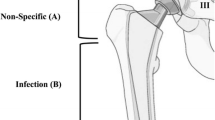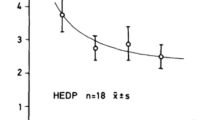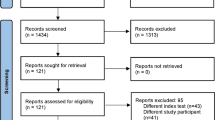Abstract
Infection in prosthesis surgery is very dangerous because it changes the patient’s prognosis. Differential diagnosis between septic and aseptic loosening is fundamental in order to apply the correct treatment. The correct diagnostic approach is still debated in literature. The aim of this study was to perform a review of literature evaluating positron emission tomography (PET) capacity to distinguish between septic and aseptic loosening in hip prosthesis. Research was done principally among medical archives. Five studies were selected which satisfied the required characteristics, and a weighted average of sensitivity and specificity of the different studies was determined. The fluorodeoxyglucose positron emission tomography (FDG-PET) sensitivity in individuating hip prosthesis infections was 82.8% and specificity was 87.3%. Positron emission tomography based on 2-fluoro-2-deoxy-D-glucose could be a valid option if research is able to find an uptake pattern specific for septic and aseptic loosening.
Résumé
Les infections en chirurgie prothétique sont très néfastes car elles peuvent changer le pronostic des patients. Le diagnostic différentiel entre complications septiques ou descellement aseptique est fondamental afin d'avoir un traitement adapté. Le diagnostic différentiel est très discuté dans la littérature. Objectif: Nous avons voulu faire une revue de la littérature afin de mettre en évidence les caractères des descellements septiques ou aseptiques dans les prothèses de hanche. Matériel et méthode: ces travaux ont été réalisés avec Medical Archives. 5 études ont été sélectionnées. Ces articles ont concerné essentiellement les possibilités de diagnostic avec la topographie par émission de protons (PET scan). Résultats: la sensibilité d'utilisation du PET Scan dans les complications infectieuses est de 82,8% et la spécificité de 87,3%. En conclusion: la technique par émission de protons à partir de 2-fluoro-2-deoxy-D-glucose est une option tout à fait intéressante qui permet de faire le diagnostic différentiel entre les descellements septiques ou aseptiques.
Similar content being viewed by others
References
Becker W, Pasurka B, Borner W (1989) Significance of leukocyte scintigraphy of the infected total endoprosthesis (in German). Rofo 150(3):284–289
Chacko TK, Zhuang H, Stevenson K, Moussavian B, Alavi A (2002) The importance of the location of fluorodeoxyglucose uptake in periprosthetic infection in painful hip prostheses. Nucl Med Commun 23(9):851–855
Duff GP, Lachiewicz PF, Kelley SS (1996) Aspiration of the knee joint before revision arthroplasty. Clin Orthop Relat Res (331):132–139
Fitzgerald RH Jr (1995) Diagnosis and management of the infected hip prosthesis. Orthopedics 18(9):833–835
Hanssen AD, Rand JA (1999) Evaluation and treatment of infection at the site of a total hip or knee arthroplasty. Instr Course Lect 48:111–122
Hunter GA, Welsh RP, Cameron HU, Bailey WH (1979) The results of revision of total hip arthroplasty. J Bone Joint Surg Br 61-B(4):419–421
Levitsky KA, Hozack WJ, Balderston RA, Rothman RH, Gluckman SJ, Maslack MM, Booth RE Jr (1991) Evaluation of the painful prosthetic joint. Relative value of bone scan, sedimentation rate, and joint aspiration. J Arthroplasty 6(3):237–244
Love C, Pugliese PV, Afriyie MO, Tomas MB, Marwin SE, Palestro CJ (2000) Utility of F-18 FDG imaging for diagnosing the infected joint replacement. Clin Positron Imaging 3(4):159
Maderazo EG, Judson S, Pasternak H (1988) Late infections of total joint prostheses. A review and recommendations for prevention. Clin Orthop Relat Res (229):131–142
Mumme T, Reinartz P, Alfer J, Muller-Rath R, Buell U, Wirtz DC (2005) Diagnostic values of positron emission tomography versus triple-phase bone scan in hip arthroplasty loosening. Arch Orthop Trauma Surg 125(5):322–329
Reinartz P, Mumme T, Hermanns B, Cremerius U, Wirtz DC, Schaefer WM, Niethard FU, Buell U (2005) Radionuclide imaging of the painful hip arthroplasty: positron-emission tomography versus triple-phase bone scanning. J Bone Joint Surg Br 87(4):465–470
Stumpe KD, Notzli HP, Zanetti M, Kamel EM, Hany TF, Gorres GW, von Schulthess GK, Hodler J (2004) FDG PET for differentiation of infection and aseptic loosening in total hip replacements: comparison with conventional radiography and three-phase bone scintigraphy. Radiology 231(2):333–341
Van Acker F, Nuyts J, Maes A, Vanquickenborne B, Stuyck J, Bellemans J, Vleugels S, Bormans G, Mortelmans L (2001) FDG-PET, 99mtc-HMPAO white blood cell SPET and bone scintigraphy in the evaluation of painful total knee arthroplasties. Eur J Nucl Med 28(10):1496–1504
Vanquickenborne B, Maes A, Nuyts J, Van Acker F, Stuyck J, Mulier M, Verbruggen A, Mortelmans L (2003) The value of (18)FDG-PET for the detection of infected hip prosthesis. Eur J Nucl Med Mol Imaging 30(5):705–715
Zhuang H, Chacko TK, Hickeson M, Stevenson K, Feng Q, Ponzo F, Garino JP, Alavi A (2002) Persistent non-specific FDG uptake on PET imaging following hip arthroplasty. Eur J Nucl Med Mol Imaging 29(10):1328–1333
Zhuang H, Duarte PS, Pourdehnad M, Maes A, Van Acker F, Shnier D, Garino JP, Fitzgerald RH, Alavi A (2001) The promising role of 18F-FDG PET in detecting infected lower limb prosthesis implants. J Nucl Med 42(1):44–48
Author information
Authors and Affiliations
Corresponding author
Rights and permissions
About this article
Cite this article
Zoccali, C., Teori, G. & Salducca, N. The role of FDG-PET in distinguishing between septic and aseptic loosening in hip prosthesis: a review of literature. International Orthopaedics (SICO 33, 1–5 (2009). https://doi.org/10.1007/s00264-008-0575-2
Received:
Accepted:
Published:
Issue Date:
DOI: https://doi.org/10.1007/s00264-008-0575-2




